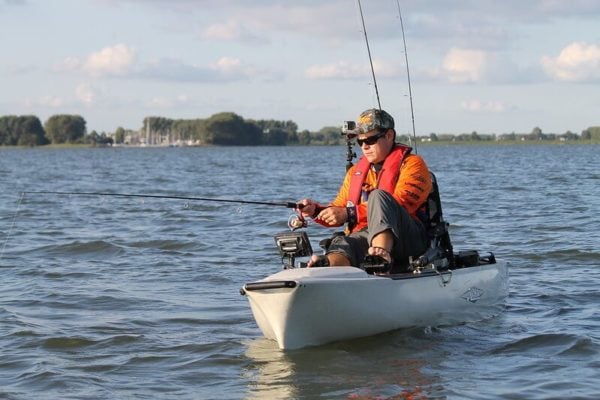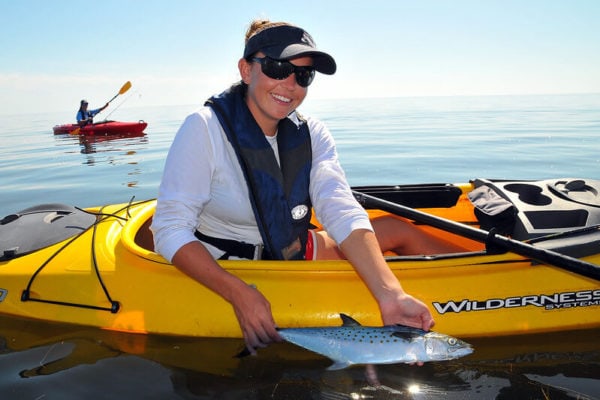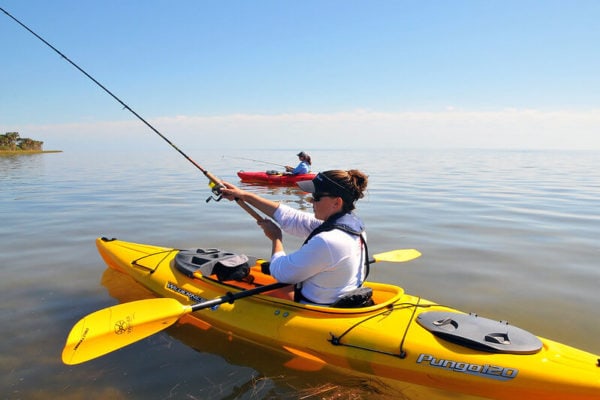Interested in Kayak Fishing? Here’s What You Should Know
Category: article
Mar 5th, 2021 by Keith Worrall
Modified Mar 5th, 2021 at 7:49 PM

Kayak fishing is an exciting experience for many anglers, but it is a skill that isn’t learned without some practice first</a>. Maybe you’re a skilled fisherman wanting to integrate a brand-new kayak into the mix. Or, maybe you’re a seasoned kayaker wanting to take a chance on fishing from a kayak. Whatever your reasoning, kayak fishing is not only an exciting experience, it’s also inexpensive, eco-friendly and a great way to get outside for some fresh air. Consider these five tips before you venture on out into the water so that you can get the most out of kayak fishing:
Always have a plan and bring safety gear
As far as safety goes, it is always important to make a float plan. Let people know where you’re fishing and what your plan is in case of emergency. If you’re a beginner, don’t ever think you should go alone. Go with a friend that has some experience and doesn’t mind if you tag along.

Don’t just show up to a random river and expect to make a guess on what’s in the water or what the current is expected to be like. This is especially important if you are kayaking in the ocean. Spend some time researching where you are going. It’s also important to check local fishing reports to understand what’s biting and where they’re biting. It’s an important part of developing skills and the environmentally friendly thing to do.
Along with making a plan, safety gear is also the most important thing to consider when making your packing list. In the event of an emergency, these items can save your life. A personal floatation device (PFD) is essential. Other items to consider: a first aid kit, paddle leash, fishing rod leash, whistle and an emergency kayak repair kit. No matter how experienced you are in kayak fishing, always be prepared.
Choose the right kayak
Fishing kayaks are designed for the sport. They include rod holders, mounting plate, rails, angles and material that ensure you are getting the most out of your kayak. If you’re on a budget, there are cost-effective options, but if you’d like to invest in the sport long-term, it’s definitely worth looking at some high-quality options. You will get the most bang for your buck and they will last a long time. It’s also important to consider what kind of water you will be spending most of your time in. Whether you’re going to be in freshwater or saltwater, each kind of kayak has they own features that offer different experiences for the kind of waters you will be in. Check out this a old town canoe buying-guide buying guide to help you decide what’s best for you.
Invest in a paddle
There are many types of paddles out there so it can get confusing as to what you should buy. Again, always do your research. Your paddle is your main navigation tool, so it’s important to have something that is reliable. Opting for something light weight could help save your energy while out on the water, but there are plenty of options to choose from. There are also kayak fishing paddles that are slightly different than your standard kayak paddle. The blades and the shaft are typically larger. Regardless of what kind you choose, always use a paddle leash so that you don’t lose your paddle in the process of fishing.
Casting from a kayak
Casting from a kayak for the first time always feels a little awkward. Your kayak is probably going to wobble a lot, so be prepared for that. Just remember to relax and trust your boat – this is what it’s built for. It helps to loosen up your lower body and just let the boat wobble. Don’t make any harsh movements when it begins to wobble. You just have to trust its stability and you’ll be alright.
Landing fish
So, a fish bites on to your line while you’re floating in a small kayak. Now what? Reel until you have a few feet of line. Put your rod in the hand that is furthest from the fish. Make sure you keep the tension on the line and take the rod across your body and away from the fish. Now, you should be able to cradle the fish with your free hand. This is the trickiest part, especially if your used to fishing from a larger boat or off the shoreline. It takes some time to get used to, but you’ll catch on pretty quickly.
Remember, kayak fishing takes time to learn. It is important to know about any safety tips before setting out into the water, especially if you’re new to the sport. Don’t just assume that because you are a skilled kayaker that you’ll be an expert kayak fisher. Hopefully, these tips can help make your kayak fishing experience one to remember.
Tight lines and happy fishing!

